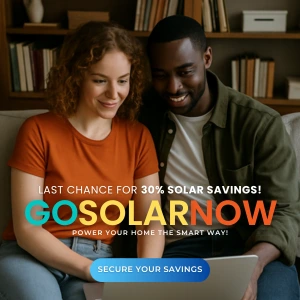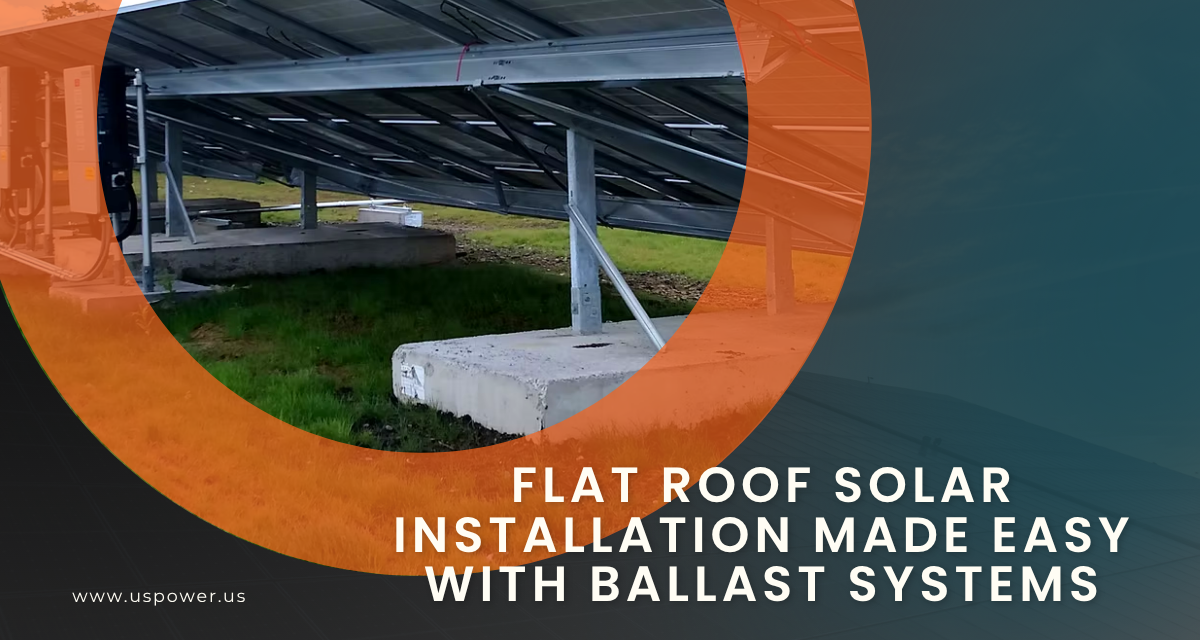Easy Guide to Electric Vehicle (EV) Chargers in SoCal 2025

Solar and Roofing Advisor
Find your best-fit EV charger with rebates, costs, and maximize solar savings in Southern California this year.
%20Chargers%20in%20SoCal%202025%20Cover.png)
If you drive or plan to get an EV (electric vehicle), understanding how EV chargers work is essential. Pairing your EV charger with high-efficiency solar power (especially from American-made, factory-direct brands like QCells) can, in many Southern California homes, dramatically cut your electricity costs and increase independence from utility rate surprises.
This guide walks you through what EV chargers are, what to consider in 2025, and how combining solar + EV charging can be a game-changer. Plus, you’ll learn about local incentives, plus how US Power can help you get maximum savings.
What Types of EV Chargers Are There?
EV chargers are categorized mainly by level (speed & power), and by whether they’re home, public, or fast. Here are the most common types:
| Charger Type | What It Means | Typical Power | Good For… |
|---|---|---|---|
| Level 1 (L1) | Uses standard 120V household outlet | ~1.4-2.4 kW | Overnight charging at home; for low-daily mileage and plug-in overnight. |
| Level 2 (L2) | Requires 240V circuit, like dryer or range outlet; more robust EV supply equipment (EVSE) | ~6-11 kW at home; up to ~19-20 kW in public/workplaces | Daily charging at home, workplaces, apartments. Charges much faster than L1 — for many SoCal drivers, this is the sweet-spot. |
| DC Fast Charger (DCFC, Level 3) | High-voltage, high power direct current (bypasses EV’s internal charger) | From ~50 kW up to several hundred kW | Roadside, public hubs, retail centers, for quick top-ups during travel. Good for EVs with fast-charge capability. |
Key Features & Standards to Evaluate in 2025
When choosing an EV charger in Southern California, here are the features & standards you should insist on:
- Connector Types
- SAE J1772 for most Level 2 chargers.
- Combined Charging System (CCS), NACS (Tesla-style), etc., for fast chargers. Compatibility matters.
- Smart / Networked Functionality
- Ability to monitor usage, schedule charging (to match low rate hours or solar production).
- Remote diagnostics, firmware updates.
- Energy Efficiency & Integration
- ENERGY STAR certification or similarly recognized efficiency rating.
- Charging behavior that can adapt to solar output (for example, charge more during daylight when solar is producing).
- Installer & Safety Standards
- Use of EVITP (Electric Vehicle Infrastructure Training Program)-certified electricians required by many CA incentive programs.
- Nationally Recognized Testing Laboratory (NRTL) listings.
- Local Incentives & Rebates
- California state programs (e.g., CALeVIP, SCIP) offer rebates for Level 2 chargers and DC fast charger installations.
- Business & public site incentives, especially in disadvantaged communities, often covering large percentages of the cost.
- Federal tax credits for residential EV charger costs (hardware + installation) currently exist. [Note: Verify year-end deadlines before applying.]
How EV Charging and Solar Panels Can Work Together
As a solar installation company that offers factory-direct, American-made QCells panels, US Power is in a unique position to help you combine solar and EV charging optimally. Here’s how that synergy works:
- Maximize daytime solar production. With solar, many homeowners produce excess power during sun hours. EVs parked at home during these hours can soak up this excess, reducing grid draw.
- Backup & demand management. Solar + storage (if added) can provide power even when grid rates are high. Smart chargers can be set to charge when solar is producing most or when utility rates are lowest.
- Cost savings & ROI. While installing a quality EV charger and solar array has upfront cost, incentives + energy savings often mean payback in just a few years in Southern California.
- Resilience. In case of power outages or high utility demand, having solar + battery backup + EV charger gives more options.
Southern California Incentives & Rebates (2025 Snapshot)
If you're installing an EV charger (L2 or DC fast) in SoCal in 2025, here are some current options:
- Southern California Incentive Project (SCIP) under CALeVIP: Rebates up to $80,000 per DC fast charger in certain cases, up to $6,000 per Level 2 connector.
- Fast Charge California Project: $55 million state program offering up to 100% of installation costs for eligible DC fast charger sites (public/business). Priority to disadvantaged / low-income areas.
- Clean Power Alliance / CALeVIP Level 2 Incentive Project: For businesses, multi-unit residences, and public sites; large portion of funds reserved for disadvantaged communities.
- Local utility rebates (SCE, LADWP etc.), city programs (e.g., Santa Monica) often have smaller rebates for residential or workplace L2 installations.
What Does It Cost — and What Should You Budget?
Here are ballpark costs you’ll encounter in 2025 in Southern California:
| Component | Estimated Range |
|---|---|
| Level 2 charger hardware + installation (home) | $1,000 – $3,500+ depending on charger features, distance to electrical panel, permits, electrician rates. After rebates/tax credits this can be much lower. |
| DC Fast Charger (public / business) | $30,000 – $150,000+ or more, depending on power level (50-350 kW+), site preparation, utility upgrades, permits. Incentives can cover a large share. |
| Solar + EV setup (if adding panels or battery) | Depends on panel size, roof structure, battery storage, etc. But solar costs continue to decline and factory-direct QCells pricing helps reduce cost per watt significantly. |
Best Practices for Choosing & Installing an EV Charger
- Think ahead — what EV(s) you have now and might have in the future. Plan for charging speed, connector compatibility, future panel/solar upgrade.
- Placement matters — convenience, running conduit, distance from panel, weather protection. If paired with solar, orient charger to make best use of solar output.
- Utility & rate structure — understand your TOU (time-of-use) rates. Some utilities penalize peak usage heavily. Smart scheduling + charging at off-peak or when solar output is high saves big.
- Permits / electrician — using certified professionals (e.g. EVITP certified) is required for many rebates/incentives. Skipping proper permits or improper installation can cost more in the long run.
- Warranty & ongoing support — make sure charger & installation come with reliable warranty, support, firmware updates.
Why Choose US Power for Your EV Charger + Solar Setup?
- Factory-direct pricing on QCells solar panels — high efficiency, American-made panels mean better lifetime value and reliability.
- Full local Southern California presence — we know local permitting, utility providers (SCE, LADWP, etc.), and incentive programs inside-out.
- Integration — we design systems so your solar panels, EV charger, and possibly battery backup work together for maximum savings.
- Certified professionals — licensed electricians with EVITP certification, following latest code & safety standards.
- Maximizing rebates & tax credits — we help you qualify, apply, and structure your system to get the most incentives.
Frequently Asked Questions (FAQ)
Q: Can I install a Level 2 charger with my existing solar setup?
A: Often yes. If your solar system has excess capacity or isn’t fully loaded, a smart L2 charger can pull from solar during daylight. If not, sometimes solar panel expansion or battery storage may be needed.
Q: Do solar panels interfere with EV charging?
A: Not at all—they support each other. Solar provides clean energy; EV chargers consume energy. The better match (solar panels sized to meet daytime usage) you have, the more you save.
Q: How fast is “fast charging” in reality?
A: A DCFC of 150-350 kW can often give 80% charge in 20-30 minutes for many EVs, depending on battery size and vehicle’s acceptance rate. For home/smaller DCFC stations, rates may be lower.
Q: Are there deadlines for incentives?
A: Yes. Many rebate and tax programs have funding limits or application deadlines. If you delay, you may miss eligibility. Always check latest from CALeVIP, CA Energy Commission, and your local utility.
Act Now: Don’t Leave Money On the Table
If you’re in Southern California and considering an EV charger or adding solar (or upgrading), 2025 is the year to act. Incentive funds are real, but many are first-come first-served and expiring. The sooner you make the switch, the sooner you start saving.
Ready to power your drive with the sun?
Contact US Power today for a free site assessment. We’ll:
- Evaluate your home or business for optimum EV charger placement and solar compatibility.
- Run all numbers: incentive eligibility, rebate/tax credit savings + energy bill reduction.
- Provide a transparent, all-in one cost estimate, using factory-direct QCells solar panels + high-performance EV chargers.
Get started now — schedule your free assessment and lock in 2025 pricing & incentives before funds run out!
Artículos relacionados
Nuestros blogs relacionados
Understand typical daily electricity usage for California homes to plan solar.
The 2025 guide to solar ballast systems for California flat roofs. Talk to an expert!
Learn the exact solar panel count your Los Angeles home needs for maximum savings.
Nuestros socios de marcas de energía solar y techos








Empoderamos a las comunidades y las empresas para que aprovechen las energías limpias y renovables energía solar soluciones que impulsan el crecimiento sostenible.
Derechos de autor © 2025 US POWER | Energía solar y techosUS Power - Axia by QCells. All Rights Reserved.
La privacidad es importante para nosotros, por lo que tiene la opción de deshabilitar ciertos tipos de almacenamiento que pueden no ser necesarios para el funcionamiento básico del sitio web. El bloqueo de categorías puede afectar a su experiencia en el sitio web.
Imprescindible
Estos elementos son necesarios para habilitar la funcionalidad básica del sitio web.
Personalización
Estos elementos permiten que el sitio web recuerde las elecciones que ha realizado (como el nombre de usuario, el idioma o la región en la que se encuentra) y proporcionan funciones mejoradas y más personales.
Mercadeo
Estos artículos se utilizan para ofrecer publicidad que sea más relevante para usted y sus intereses.
Analítica
Estos elementos ayudan al operador del sitio web a comprender cómo funciona su sitio web, cómo interactúan los visitantes con el sitio y si puede haber problemas técnicos.
Nosotros y nuestros socios externos utilizamos cookies y otras tecnologías para mejorar y rastrear su experiencia en este sitio, realizar análisis y personalizar el marketing para usted. Al usar el sitio, aceptas que usemos estas tecnologías, incluido el registro y el monitoreo de tus interacciones con el sitio.
¡Obtenga una estimación solar instantánea usando el satélite!










